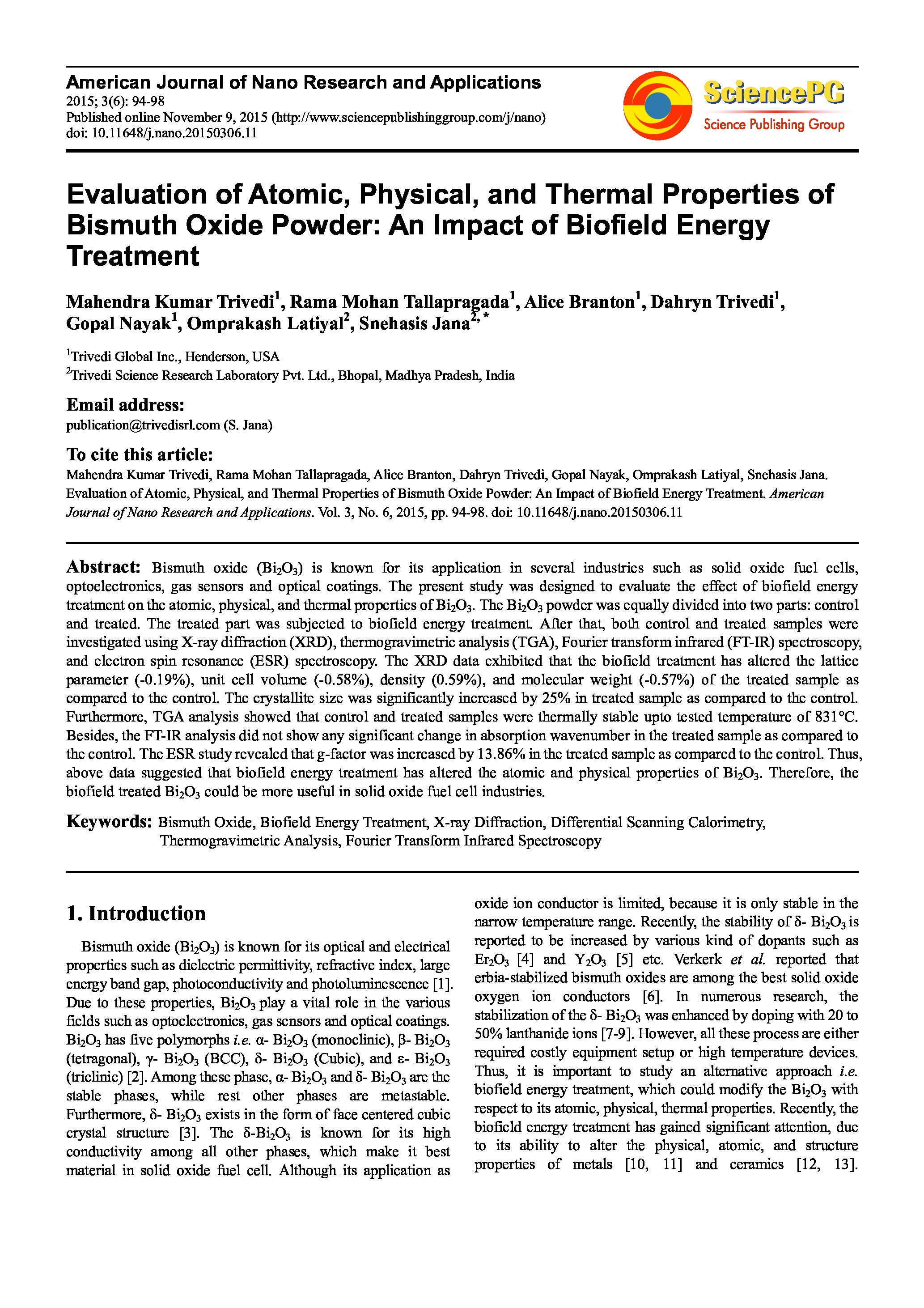Evaluation of Atomic, Physical, and Thermal Properties of Bismuth Oxide Powder: An Impact of Biofield Energy Treatment
Affiliation
Trivedi Global Inc.; Trivedi Science Research Laboratory Pvt. Ltd.
Main category
Natural Sciences (Analytical Chemistry, Method Development (Chemistr)
Abstract
Bismuth oxide (Bi2O3) is known for its application in several industries such as solid oxide fuel cells, optoelectronics, gas sensors and optical coatings. The present study was designed to evaluate the effect of biofield energy treatment on the atomic, physical, and thermal properties of Bi2O3. The Bi2O3 powder was equally divided into two parts: control and treated. The treated part was subjected to biofield energy treatment. After that, both control and treated samples were investigated using X-ray diffraction (XRD), thermogravimetric analysis (TGA), Fourier transform infrared (FT-IR) spectroscopy, and electron spin resonance (ESR) spectroscopy. The XRD data exhibited that the biofield treatment has altered the lattice parameter (-0.19%), unit cell volume (-0.58%), density (0.59%), and molecular weight (-0.57%) of the treated sample as compared to the control. The crystallite size was significantly increased by 25% in treated sample as compared to the control. Furthermore, TGA analysis showed that control and treated samples were thermally stable upto tested temperature of 831°C. Besides, the FT-IR analysis did not show any significant change in absorption wavenumber in the treated sample as compared to the control. The ESR study revealed that g-factor was increased by 13.86% in the treated sample as compared to the control. Thus, above data suggested that biofield energy treatment has altered the atomic and physical properties of Bi2O3. Therefore, the biofield treated Bi2O3 could be more useful in solid oxide fuel cell industries.
DOI
10.18147/smn.2017/paper:665
Do you have problems viewing the pdf-file? Download paper
here
If the paper contains inappropriate content, please
report the paper. You will be redirected to the landing page.
